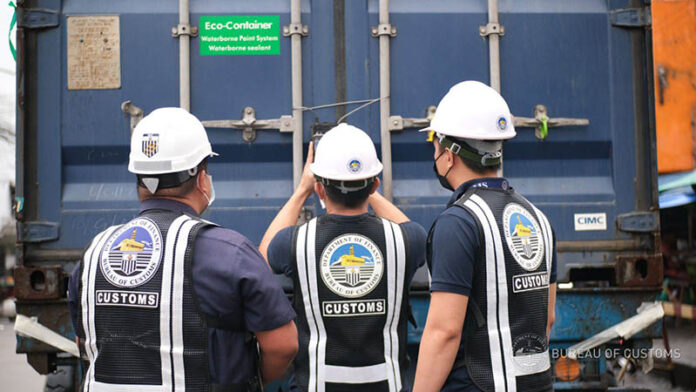
-
The Bureau of Customs’ Electronic Tracking of Containerized Cargo (E-TRACC) System recorded 50,698 completed trips and only five alarms in August 2022
-
BOC said the small number of alarms means few attempts to divert cargo and commit other customs fraud and illegal activities
-
It shows the E-TRACC System “is highly effective and a powerful deterrent against diversion and smuggling”, BOC said
-
The majority or 37,135 of the total trips in August were intended for Philippine Economic Zone Authority economic zones
The Bureau of Customs’ (BOC) Electronic Tracking of Containerized Cargo (E-TRACC) System recorded few attempts at cargo diversion in August, with only five alarms recorded on 50,698 completed trips.
The small number of alarms means few attempts to divert cargo and commit other customs fraud and illegal activities and shows the E-TRACC System “is highly effective and a powerful deterrent against diversion and smuggling”, BOC said in a statement.
Of the 50,698 completed trips for August, 37,135 were intended for Philippine Economic Zone Authority economic zones; 7,361 were for cold storage warehouses; 2,032 were imports for customs bonded warehouses (CBW); 1,349 were trips to container yard/container freight stations (CY/CFS); 2, 271 were exports for CBWs; 103 were condemned cargoes; and 447 trips were for transfer of shipments subject to further verification and/or monitoring.
BOC said the E-TRACC System “remains a vital tool for BOC in identifying and preventing illegal activities during the movement of cargoes such as erroneous delivery of containers, missing containers, or unauthorized diversion.”
E-TRACC is a Web-based system launched in 2020 to track the inland movement of containerized cargoes during transit and transfer to other customs territories and facilities. It allows BOC to track, monitor, and audit the location and condition of cargoes, as well as obtain real-time alarms on diversion and tampering of cargoes.
Under Customs Memorandum Order No. 04-2020, which implements the E-TRACC System, an electronic customs seal (ECS) is required during the transfer of cargo to a CY/CFS or other customs facilities and warehouses; transit of cargo bound for free zones, inland customs offices, depots, or terminals; transit to CBWs; export of cargo from free zones, inland customs offices, depots or terminals, and CBWs to port of loading; and transfer of shipments subject to further verification or monitoring.
The system has an alarm feature to detect diversion and tampering.
The alarms are categorized into five, as follows:
- Corridor alarm or route deviation – a vehicle has deviated from normal routes;
- Unauthorized start trip – a vehicle has departed origin before the control tower has authorized the start trip;
- Tamper alarm – the cable of the electronic customs seal is cut or the seal has been disengaged;
Missing heartbeat – the device has not transmitted a signal for more than three minutes; and - Unauthorized end trip – the container has reached the destination, but the electronic customs seal was disengaged before the control tower authorized the end of the trip.
All container vans covered by CMO 04-2020 should be affixed with an ECS before being cleared to depart from the starting point or point of discharge for the voyage to the end point or point of destination.
Except when warranted under CMO 04-2020, customs cargo clearance must be fully completed before any shipment can be sealed with an ECS.
Several memos have been issued since 2020 on the gradual inclusion into the system of various economic zones, freeports, and collection districts, and for imports, inter-island shipments, and CBWs. BOC also held public consultations on the proposed implementation of E-TRACC at all airports of entry.
Exporters and port users, however, had earlier recommended the suspension of implementation of the E-TRACC System on exports, saying it is unnecessary and will cause delays and additional costs.
The Customs Bonded Warehouse Operators Confederation Inc. and Philippine Exporters Confederation Inc. said earlier in position papers to BOC that they deemed “unnecessary and unreasonable” the use of E-TRACC on exports for various reasons, including that export cargoes are destined for specific markets and are not likely to be diverted.




